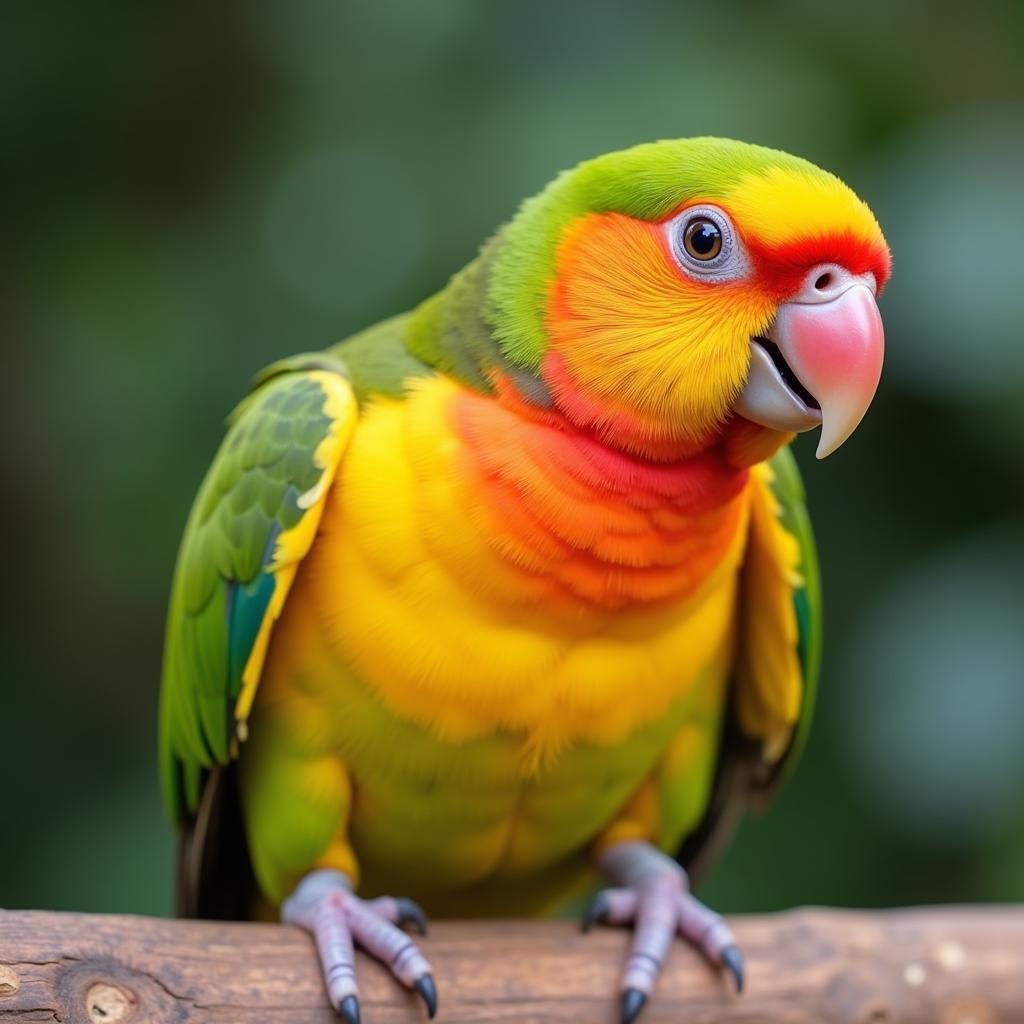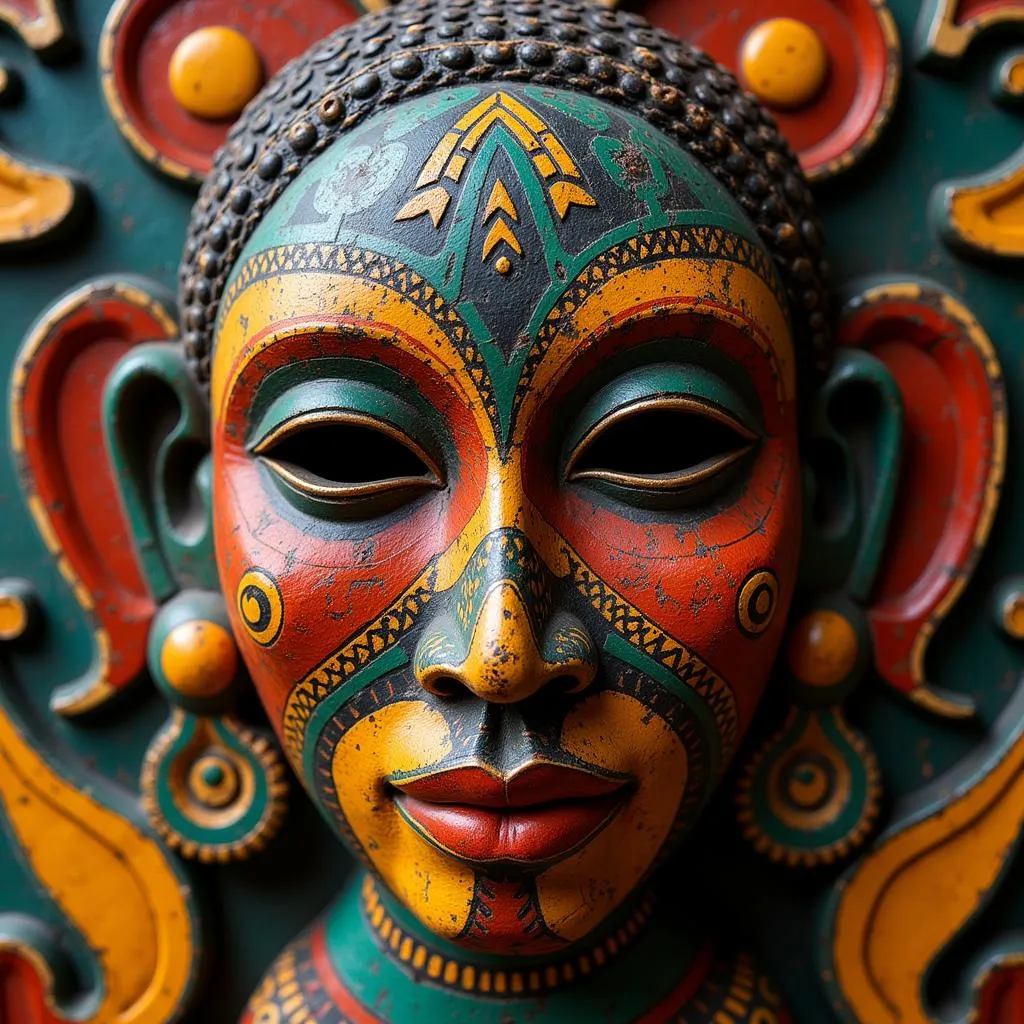All About Lutino African Lovebirds: A Comprehensive Guide
Lutino African Lovebirds are a captivating variety of these affectionate parrots, known for their distinctive yellow and orange plumage. These small, vibrant birds are a popular choice for pet owners due to their playful personalities and relatively easy care. This guide will delve into the fascinating world of lutino African lovebirds, covering everything from their unique genetics to their care requirements.
Understanding the Lutino Mutation
The lutino mutation is what gives these lovebirds their characteristic appearance. It’s a sex-linked recessive gene, meaning it affects the way the bird’s body produces melanin, the pigment responsible for dark colors. This results in the absence of dark pigments, revealing the underlying yellow and orange hues. Understanding this genetic background is important for breeders interested in producing lutino offspring.
Did you know that lutino lovebirds can still carry the genes for other colors, even though they don’t visually express them? This makes breeding them an exciting endeavor, as various color combinations can emerge in their chicks.
Caring for Your Lutino African Lovebird
Like all African lovebirds, the lutino variety requires proper care to thrive. Providing a balanced diet, a spacious cage, and regular social interaction are crucial for their well-being. Their diet should consist of high-quality pellets, supplemented with fresh fruits, vegetables, and seeds. A cuttlebone should always be available to provide them with essential calcium.
A stimulating environment is equally important. Provide a variety of toys, perches, and climbing structures to keep your lutino lovebird entertained and mentally engaged. Remember, these birds are highly social and need regular interaction with their human companions or other lovebirds.
Identifying Lutino African Lovebirds
While the bright yellow and orange plumage is the most obvious characteristic, there are other subtle features that can help you identify a lutino African lovebird. They have red eyes, unlike other varieties which often have dark eyes. Their beaks and feet are also usually a lighter shade compared to their non-lutino counterparts. Want to learn more about different lovebird types? Check out our guide on African love birds types.
Are lutino lovebirds more expensive than other color varieties? The price can vary depending on factors like age, breeder, and location. You can find more information on pricing in our detailed African love birds price list.
Health Considerations for Lutino African Lovebirds
Lutino African lovebirds are generally hardy, but like any pet bird, they are susceptible to certain health issues. Feather plucking can be a sign of stress or boredom, so it’s important to provide a stimulating environment and address any underlying medical conditions. Regular veterinary checkups are essential for preventative care and early diagnosis of potential health problems. Sometimes, understanding the price range can be helpful in budgeting for their care. See our article on African love birds price in india for an example of regional pricing.
 A Healthy Lutino African Lovebird
A Healthy Lutino African Lovebird
Breeding Lutino African Lovebirds
Breeding lutino lovebirds can be a rewarding experience, but it requires careful planning and understanding of genetics. Pairing a lutino with a non-lutino carrying the lutino gene can result in lutino offspring. However, pairing two lutinos together is generally discouraged as it can increase the risk of genetic weaknesses in the chicks.
Conclusion
Lutino African lovebirds are delightful companions, bringing joy and vibrancy into the lives of their owners. By understanding their unique needs and providing proper care, you can ensure that your lutino lovebird lives a long, healthy, and happy life. Remember that a balanced diet, a stimulating environment, and regular interaction are key to their well-being. Lutino African lovebirds are truly a special breed, offering a unique and rewarding pet ownership experience.
FAQ
- What makes a lutino lovebird different? The lutino mutation causes a lack of dark pigments, resulting in their yellow and orange coloring.
- Are lutino lovebirds difficult to care for? No, their care requirements are similar to other African lovebirds.
- Can two lutino lovebirds be bred together? It’s generally not recommended due to potential genetic risks.
- What do lutino lovebirds eat? A diet of high-quality pellets, fresh fruits, vegetables, and seeds.
- How can I tell if my lutino lovebird is healthy? Look for bright plumage, clear eyes, and active behavior. Regular vet checkups are important.
- How can I provide enrichment for my lutino lovebird? Offer a variety of toys, perches, and opportunities for social interaction.
- Where can I find more information on lovebird pricing? You can check resources like African love birds price list.
Need assistance? Contact us at Phone: +255768904061, Email: kaka.mag@gmail.com or visit us at Mbarali DC Mawindi, Kangaga, Tanzania. We have a 24/7 customer service team.


